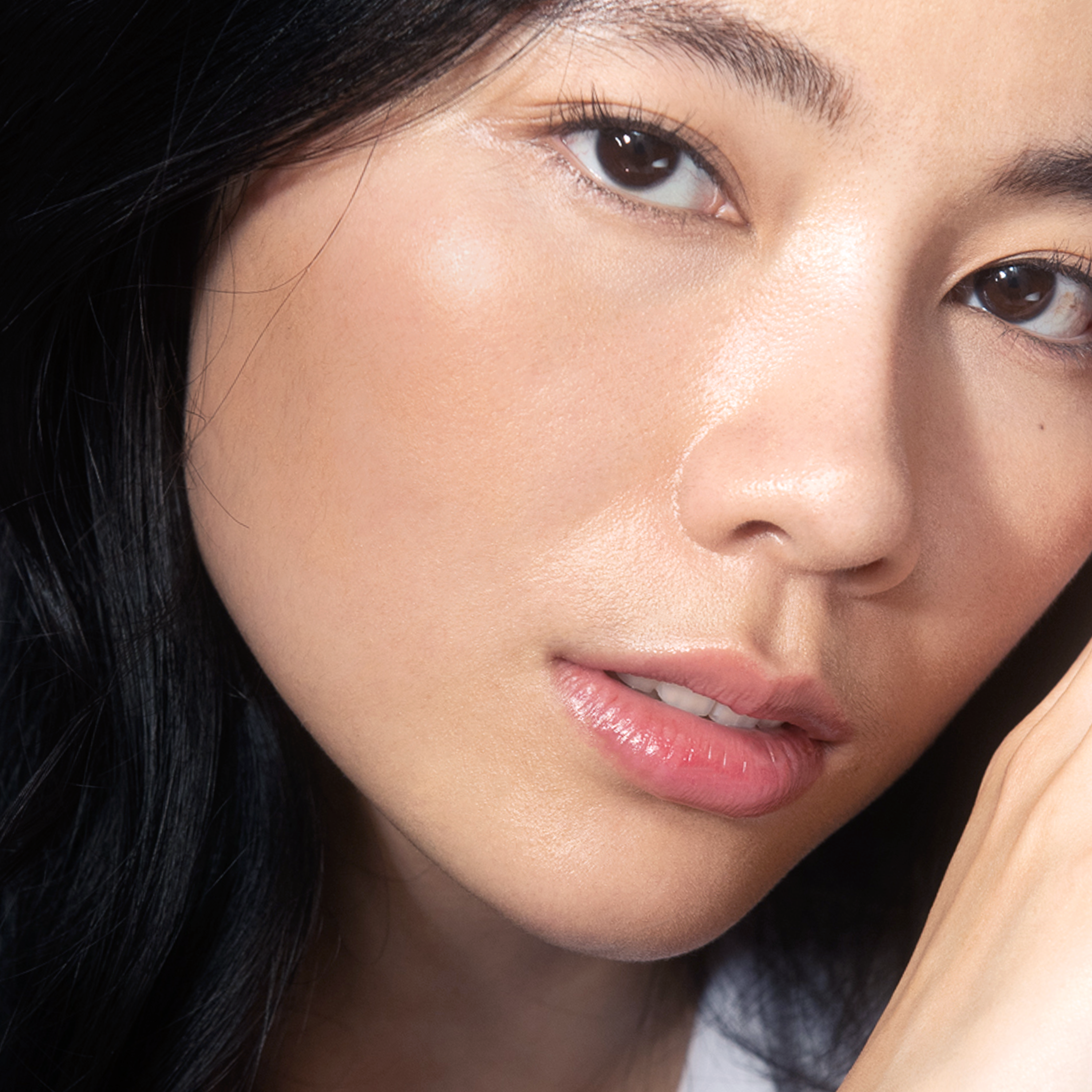
How Monsoon Humidity Affects Your Skin: Common Problems and Solutions
Monsoon offers relief from the scorching heat and the much-needed break from humidity and dryness. It brings beautiful flowers, rain showers that offer peace to the heart and soul. But monsoon can be a challenging season for your skin. Along with the cool breeze and greenery, monsoon comes with many skin issues such as acne, rashes, and skin dryness. Controlling these issues may be difficult if you ignore the symptoms. Adjusting your skin care routine can help you fight these challenges and maintain healthy, radiant skin throughout the season. If you are dealing with any of these skin issues, it's time to rework your monsoon skin care routine to protect your skin barrier and maintain that healthy glow.
This guide offers expert-backed insights into how monsoon and skin interact, the common skin problems in monsoon, and dermatologist-approved solutions to fix them.

What are the Common Skin Issues in Monsoon?
The key skin issue with monsoon is the increasing humidity. During monsoon, the humidity remains high and can turn your skin sticky, causing too much sweat. As your skin sweats, it houses bacteria and fungi. Eventually, the bacteria and fungi build up, causing bacterial and fungal infections and skin allergies. Skin issues in the monsoon are very common due to temperature fluctuations.
Here are some of the most common skin issues in monsoon:
Skin Infections
Fungal infections are very common in the monsoon as fungi thrive in humid and hot conditions. The high temperature, along with increased sweating, causes ringworm in the body folds. This weather also causes athlete's foot, a common skin issue in monsoon that is caused when your feet have been in contact with dirty water for a long time. This monsoon skin issue can be treated with anti-bacterial or antifungal powders and creams.
Acne
Acne is another skin issue common in the monsoon. If your skin is acne-prone already, monsoon will worsen the condition. You may also be at risk of getting infections. This is due to the excessive humidity in the air and excessive production of sebum, which becomes the breeding ground for bacteria.
Itching
Itching and rashes often go hand in hand and are one of the most common skin issues in the monsoon. Humidity during monsoon can make your skin itchy and sticky. Never ignore these common yet overlooked symptoms of skin issues during monsoon, as it could lead to a more severe skin infection.
Eczema
High humidity and excessive sweating in monsoon tend to make the skin dry, increasing the chances of eczema. Eczema is caused by prolonged exposure to damp conditions and can lead to itchy, inflamed skin. Using the wrong monsoon skin care product can worsen the condition.
How Excessive Humidity Impacts Your Skin
When the air is saturated with moisture, your skin reacts in multiple ways, most of which could lead to imbalance and discomfort.
Causes of Excessive Oiliness
The combination of monsoon and skin is deadly. The high humidity and sweat can trick your skin into producing more sebum. This causes the sebaceous glands to go into overdrive, trying to adjust to damp conditions. The excess oil produced by the skin traps dirt, dead skin cells, and bacteria, which leads to clogged pores. People with sensitive skin may notice more redness, inflammation, and even patchiness. The best monsoon skin care product you use should be non-comedogenic moisturizers and cleansers like Cetaphil Oily Skin Cleanser to balance oil without stripping the skin.
Increased Incidence of Acne and Blemishes
Pimples, whiteheads, and blackheads become one of the most common skin issues in monsoon due to clogged pores from sweat and grime. Poorly formulated skincare that reacts poorly with the increased humidity can accelerate the rashes.
If you are using excessive alcohol based toners, it's time to stop immediately, as they may irritate your skin.
Vulnerability to Fungal Infections
Fungal infections thrive the most in moist, warm environments, exactly what monsoon brings. Skin folds like the underarms, groin, and area behind the knees are the most affected. Wearing damp clothes or footwear can lead to ringworm, athlete's foot, or even candidiasis. Sensitive skin is more prone to inflammation, itching, and secondary infections. Prevention is the key in the monsoon. Keep your skin dry and clean, and opt for fragrance-free moisturizers to reduce irritation.
H2: Why You Should Adjust Your Skincare Routine for Monsoon
Your summer routine won't work as a monsoon skin care routine. The shift in humidity, air quality, and microbial exposure demands an updated monsoon skin care routine.
Importance of a Light Moisturiser
Heavy creams can clog the skin pores and feel greasy in humid weather.
Instead:
- Use water-based moisturizers enriched with glycerin, panthenol, or hyaluronic acid.
- Choose non-comedogenic and fragrance-free formulas for sensitive skin.
- Cetaphil Daily Hydrating Lotion with Hyaluronic Acid offers deep hydration minus the stickiness.
Choosing the Right Cleanser
Cleaning is essential to eliminate impurities, excess oil, and environmental grime.
- Avoid harsh cleansers with alcohol or sulphates.
- Use pH-balanced, soap-free cleansers like Cetaphil Gentle Skin Cleanser.
- Cleanse twice daily to prevent acne flare-ups and maintain a healthy skin barrier.
The Role of Exfoliation
Humidity increases sweat and sebum production in the body, which encourages the dead skin to build up.
- Use gentle exfoliants, typically with niacinamide or salicylic acid, once or twice per week.
- Avoid scrubbing if you have sensitive or acne-prone skin.
- Cetaphil Exfoliating Cleanser is a safe option for gentle resurfacing with irritation and a must-have in your monsoon skin care routine.
How to Combat Common Monsoon Skin Problems
Here's a targeted approach to address each of the monsoon-specific skin concerns.
For Excess Oil and Shine
- Use a foaming cleanser with mild surfactants
- Apply mattifying moisturizers that won't clog pores
- Blotting papers can help absorb surface oil without disrupting makeup
For Acne and Breakouts
- Avoid heavy makeup and occlusive skincare
- Apply benzoyl peroxide or salicylic acid-based spot treatments
- Cleanse post-sweat with a non-stripping, dermatologically tested formula
For Fungal Infections
- Keep body folds dry with talc-free powders
- Avoid synthetic fabrics; wear breathable cotton
- Change socks, innerwear, and gym clothes promptly after sweating
For Skin Sensitivity and Rashes
- Use hypoallergenic, fragrance-free products (like Cetaphil Moisturising Cream)
- Stay away from alcohol-based sanitizers and toners
- Pat—not rub—your skin dry after washing or bathing
Tips for Maintaining Healthy Skin During Monsoon
Maintaining healthy skin in monsoon goes beyond just using monsoon skincare products. A holistic approach ensures long-term resilience.
Dietary Changes for Better Skin
What you eat directly affects your skin's texture, tone, and barrier function.
- Add omega-3 fatty acids (flaxseeds, walnuts, fish) to reduce inflammation
- Include vitamin C and zinc to support collagen production and healing
- Limit sugary and processed foods that can trigger breakouts
Importance of Staying Hydrated
Even in humid weather, internal dehydration is possible.
- Drink at least 2–3 litres of water daily
- Herbal teas like chamomile or tulsi can support detox
- Consume water-rich fruits like watermelon and cucumber
Dehydrated skin often appears dull, flaky, and tight, especially in air-conditioned settings. Use hydrating serums and creams alongside water intake for best results.
Using Protective Skincare Products
Weather-proof your skin by using products designed for high humidity and pollution.
- Apply a broad-spectrum sunscreen even on cloudy days
- Use non-comedogenic, barrier-repairing moisturizers
- Reapply SPF every 2–3 hours if you're outdoors
Tip: Use the Cetaphil AI Skin Analysis Tool for personalized product recommendations based on your skin type.
Conclusion
Monsoon and skin share a complex relationship. While the air may feel moist, your skin may be silently struggling with oiliness, breakouts, fungal infections, and sensitivity. By understanding how humidity affects the skin, adjusting your monsoon skin care routine, and using dermatologist-approved skin care products like Cetaphil, you can effectively protect your skin barrier and glow all season long.
Here's a quick recap of your monsoon skin care essentials:
- Cleanse gently, twice a day. Use light, non-comedogenic moisturizers
- Avoid alcohol heavy or abrasive skincare
- Exfoliate once or twice a week
- Hydrate inside and out
- Choose skin-friendly fabrics
- Address fungal concerns proactively
Whether you are battling acne, dryness, or increased sensitivity, Cetaphil's clinically proven formulations offer a gentle yet effective solution.
FAQs
How can monsoon humidity cause acne to flare up?
High humidity during monsoon increases sweat and oil production, which can clog pores and create an ideal environment for acne-causing bacteria. The mix of excess sebum, dirt, and dead skin cells leads to more frequent breakouts, especially in individuals with oily or sensitive skin. Wearing damp clothes, skipping cleansing routines, or using heavy skincare products may worsen acne. To prevent flare-ups, follow a monsoon skin care routine using non-comedogenic, pH-balanced cleansers like Cetaphil Oily Skin Cleanser and a light, oil-free moisturizer.
What types of skincare products are best for oily skin in the monsoon?
For oily skin in the monsoon, opt for lightweight, non-comedogenic skincare products that control oil without stripping moisture. Choose gel-based cleansers, mattifying moisturizers with glycerin or hyaluronic acid, and fragrance-free, alcohol-free formulas. Avoid heavy creams or occlusive serums that clog pores. A good pick would be Cetaphil Daily Hydrating Lotion—light, fast-absorbing, and dermatologist-recommended. Adding a gentle exfoliant once or twice a week and using a broad-spectrum sunscreen are also essential parts of your monsoon skin care routine.
Can fungal infections on the skin be prevented during the rainy season?
Yes, fungal infections can be prevented during monsoon by keeping skin clean, dry, and well-ventilated. Humid weather promotes fungal growth in skin folds such as the underarms, groin, and between toes. To reduce risk, wear breathable fabrics, avoid damp clothes, and use fragrance-free, dermatologist-tested moisturizers that don't trap sweat. After bathing, pat dry thoroughly and apply talc-free absorbent powders if needed. Incorporating a gentle cleanser like Cetaphil Gentle Skin Cleanser helps maintain skin hygiene without irritation, especially for sensitive skin prone to infections.
Should sunscreen be used during the monsoon season?
Absolutely. Even on cloudy or rainy days, UV rays penetrate through clouds and can damage your skin. Skipping sunscreen during monsoon may lead to pigmentation, premature ageing, and worsened sensitivity. Use a broad-spectrum, water-resistant sunscreen with SPF 30 or higher, and reapply every 2–3 hours if outdoors. For oily or sensitive skin types, opt for a non-comedogenic, lightweight formula that doesn't clog pores. Always apply sunscreen as the final step in your monsoon skin care routine, even if you're staying mostly indoors.
How often should I exfoliate my skin in the monsoon to prevent clogged pores?
Exfoliate your skin 1–2 times a week during monsoon to prevent the buildup of dead skin cells, sweat, and sebum, which can clog pores. However, avoid harsh scrubs or over-exfoliation, especially if you have sensitive or acne-prone skin. Choose mild exfoliants with ingredients like salicylic acid, niacinamide, or lactic acid that gently remove impurities without disrupting your skin barrier. Dermatologist-recommended products like Cetaphil Exfoliating Cleanser offer effective cleansing without irritation. Always follow up with a hydrating, fragrance-free moisturizer to maintain your skin's protective layer.




